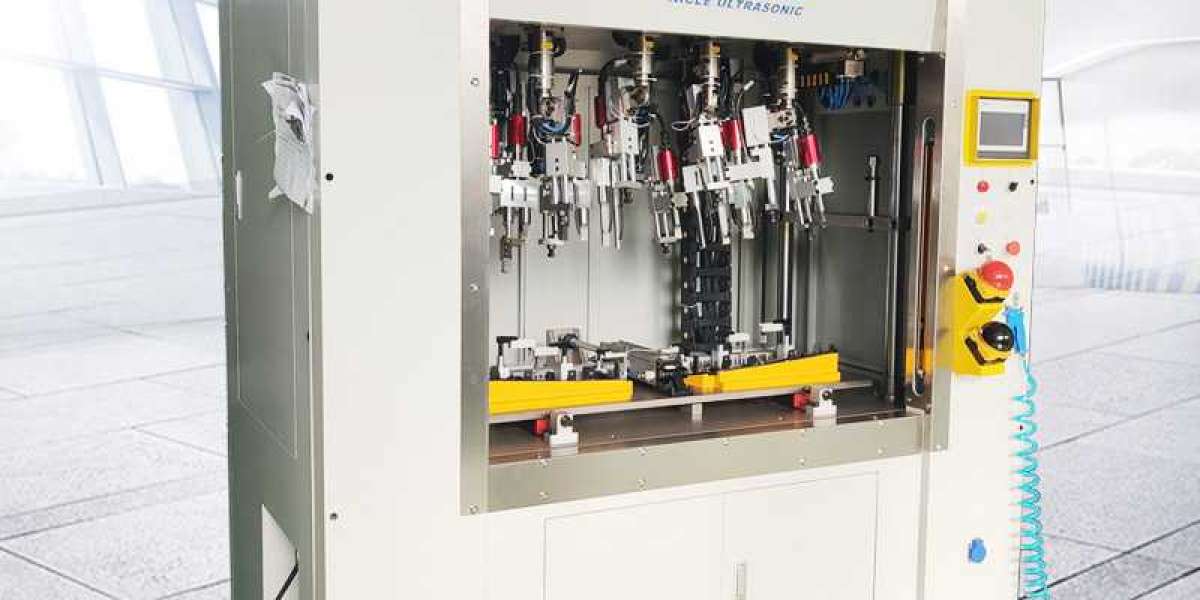The demand for custom plastic ultrasonic welding equipment is growing as industries push for precision, sustainability, and faster production cycles. Traditional fixed systems often limit flexibility, but modular and reconfigurable designs are transforming how manufacturers approach welding. By adopting future-ready solutions, you gain equipment that adapts to shifting production needs without the costs of complete replacement.
This article explores why modular ultrasonic welding is shaping the future, its advantages across industries, and what to look for when investing in next-generation systems.
What is Ultrasonic Welding?
Ultrasonic welding is a process that uses high-frequency vibrations to join thermoplastic components. The energy is applied to the joint area, generating heat through friction that bonds materials at the molecular level.
It’s widely used in industries such as:
Automotive – dashboards, lighting, and fluid reservoirs.
Medical – IV filters, masks, and diagnostic tools.
Consumer goods – electronics housings, toys, and packaging.
Its appeal lies in speed, accuracy, and the absence of adhesives or solvents.
Why Modular and Reconfigurable Equipment Matters
Traditional ultrasonic plastic welders are typically built for a specific part or product. While reliable, they can’t easily scale or shift when new requirements emerge. Modular equipment changes that.
A modular ultrasonic welder allows manufacturers to:
Swap tooling and fixtures quickly.
Reconfigure setups for different product designs.
Expand production capacity without major capital spend.
This flexibility saves costs, reduces downtime, and keeps operations aligned with evolving product lifecycles.
Key Benefits of Future-Ready Welding Equipment
1. Cost Efficiency Over Time
Instead of buying separate machines for each part design, modular systems support multiple applications. The upfront investment may be higher, but lifecycle costs are significantly lower.
2. Faster Time to Market
Reconfigurable designs let teams respond quickly to design changes or new product launches. Manufacturers can adapt production lines without long lead times.
3. Sustainability Advantages
Reusable modules mean less equipment waste. Combined with energy-efficient ultrasonic processes, this contributes to greener manufacturing.
4. Improved Quality and Consistency
Advanced control systems in modern welders ensure precise parameter settings, reducing human error. Consistent weld quality lowers defects and boosts customer trust.
5. Industry 4.0 Integration
Smart ultrasonic welding systems often include:
Real-time data collection
Predictive maintenance alerts
Remote monitoring capabilities
This aligns with the broader shift to connected, intelligent manufacturing.
Applications Driving Innovation
Medical Devices
Demand for sterile, reliable joins is pushing ultrasonic welding innovation. Modular setups allow fast reconfiguration to meet new compliance or design needs.
Automotive Lightweighting
As carmakers shift to plastics and composites for weight reduction, ultrasonic welding offers strong bonds without mechanical fasteners. Modular systems let OEMs manage multiple parts efficiently.
Consumer Electronics
Frequent design updates in electronics mean rapid tooling changes are essential. A reconfigurable welder keeps production agile.
What to Look For in Modular Welding Equipment
When considering custom plastic ultrasonic welding equipment, focus on:
Scalability – Can the system expand as your output grows?
Ease of Tooling Changeovers – How quickly can operators switch modules?
Software Controls – Look for programmable settings, weld recipe storage, and connectivity features.
Ergonomics – Operator-friendly interfaces and safe module handling.
After-Sales Support – Ongoing service, calibration, and upgrades.
Challenges and Considerations
While modular welding is attractive, there are challenges:
Higher Initial Cost – Investment is steeper upfront.
Operator Training – Staff must adapt to more advanced systems.
Maintenance Planning – More modules mean more parts requiring checks.
However, these challenges are manageable with planning and vendor support.
The Road Ahead: Reconfigurable Design Trends
Future-ready ultrasonic welding is likely to focus on:
AI-driven optimisation – Systems that adjust parameters automatically for material variations.
Digital twins – Simulations to test weld setups before physical implementation.
Customisable footprints – Modular frames that fit into existing lines.
Energy efficiency – Smarter power management to reduce operating costs.
By investing in flexible systems, you position your operations to stay competitive as manufacturing continues to digitise.
Conclusion
Custom plastic ultrasonic welding equipment with modular and reconfigurable designs is more than an upgrade—it’s a strategic investment in flexibility, efficiency, and sustainability. As industries face rapid product innovation and tighter regulations, future-ready systems help you adapt without constant reinvestment.







